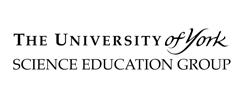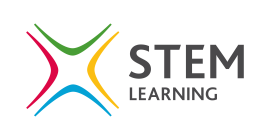States of matter and particle theory
Throughout key stages 3 and 4, students will develop an increasingly sophisticated understanding of the particle model in order to explain more complex phenomena. In Year 7 a good enough model, supported by visual and physical representations of particles, can be used to explain states of matter. This list includes practical teaching tips and a range of suggested activities and demonstrations.
The resources in this list are linked to the following topics:
- the properties of the different states of matter (solid, liquid and gas) in terms of the particle model, including gas pressure
- changes of state in terms of the particle model.
Visit the secondary science webpage to access all lists: www.nationalstemcentre.org.uk/secondaryscience
Whilst this list provides a source of information and ideas for experimental work, it is important to note that recommendations can date very quickly. Do NOT follow suggestions which conflict with current advice from CLEAPSS, SSERC or recent safety guides. eLibrary users are responsible for ensuring that any activity, including practical work, which they carry out is consistent with current regulations related to health and safety and that they carry an appropriate risk assessment. Further information is provided in our Health and Safety guidance.
- ALL
- Teacher guidance
- Textbook
- Video
- Article
- Experiment
- External link
- Other
Teacher guidance
Stuff and Substance: Ten Key Practicals in Chemistry *suitable for home teaching*
This is a great set of practical activities to demonstrate particle theory. Along with comprehensive teacher notes in the booklet, there are a series of useful powerpoint presentations that could be useful.
Strengthening Teaching and Learning of Particle Theory, Secondary National Strategy
This booklet provides detailed information on students' misconceptions about particles, as well as guidance on progression across Key Stages 3 and 4 when thinking about developing an increasingly sophisticated understanding of this abstract concept. There are a series of suggested activities to address these misconceptions.
Chemical and physical changes in a lorry
A set of tasks enabling pupils to demonstrate their understanding of physical and chemical change.
The particulate nature of matter - R2P
This resource provides a lesson plan showing how to use enquiry based instruction to teach the particulate nature of matter. The lesson leads pupils through a series of activities. Pupils are then asked to explain, pictorially, verbally or in written form their observations using particle theory. These responses highlight pupil misconceptions which need to be addressed. A research summary discusses how a lack of deep understanding of the particulate nature of matter constrains the understanding of subsequent science concepts and the common misconceptions pupils have about the topic.
Textbook
The Atmosphere
There are some nice pressure experiments on page 50 of this book that would be useful when studying particle theory. The accompanying student sheet is well set out.
Video
Dry Ice Demonstration
This video demonstrates an experiment using solid carbon dioxide (dry ice) and sodium hydroxide which is likely to impress students. The clip shows how solid carbon dioxide sublimes into gaseous carbon dioxide. The video is accompanied by an information sheet which summarises the requirements, procedure and scientific background to the experiment.
Life in the freezer
This resource is a video and accompanying student and teacher sheets detailing a good, visual practical about measuring the rate at which ice melts. As there are several different ways in which the experiment can be carried out students can choose their own equipment and develop their own method.
Article
Try This - Pouring a Gas
This article explains how some gases can be poured. There are instructions for an easy but impressive practical where carbon dioxide can be made using a vinegar-sodium bicarbonate reaction and then poured onto a candle which is then extinguished.
Experiment
Key Stage Three: Champion Chocolate
This is a well resourced lesson in which students help Cadbury's improve their chocolate. There is a video outlining the various processes they use in their factory along with lesson plans, student sheets and technician notes.
Antibubbles
Most children will be familiar with soapy bubbles consisting of gas surrounded by a film of moisture. This lesson looks at the behaviour of matter through the formation of bubbles that contain liquid surrounded by a ‘membrane’ of gas, giving rise to the name 'antibubbles’. It then links the use of bubbles to delivering drugs to cancerous tissue. The resource consists of a video, teacher and technician notes and student worksheets.
External link
Chocolate and egg
In this simple experiment, students use a Bunsen burner and water bath to investigate the different effects of heat on chocolate and egg white. The practical provides a clear introduction to physical and chemical changes, and can be used to ensure students learn how to use Bunsen burners safely.
Other
Space - lesson starter movies
A collection of three videos which are excerpts from the 'We Are Aliens!' planetarium show. They provide good starter activities for looking at life within our universe. They explore life within our solar system and the Earth and other planets that may contain life. The exoplanets videos go on to look at the possibilities of life outside our solar system.











